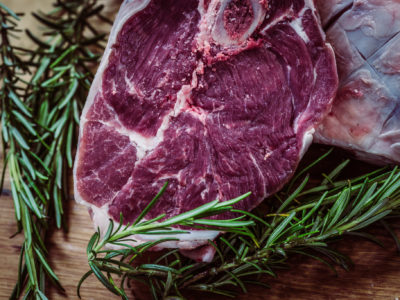Vitamin B3 (also called niacin) is a water soluble, B complex vitamin that is used in all cellular metabolism within our mitochondria. Much like several other B vitamins, this vitamin cofactor is part of our primary metabolic system, meaning that we need it to produce energy from any macronutrient (fat, protein, or carbohydrate – it all ends with glycolysis!). Specifically, vitamin B3 is necessary for oxidation-reduction reactions, which involves the transfer of electrons (an essential part of converting glucose to cellular energy, ATP) across a membrane in the mitochondria. Plus, B3 is used in the production of many molecules important for health, like cholesterol, and L-carnitine, which is important for lipid metabolism specifically. Vitamin B3 helps improve circulation, aids the body in manufacturing various stress- and sex-related hormones, and suppresses inflammation.
Also like other Bs (especially B1 and B2), true clinical vitamin B3 deficiency – called pellagra – is very rare in the modern world. Pellagra symptoms are severe and include dermatitis, diarrhea, and dementia. Niacin deficiency is almost always associated with malnutrition and is mostly likely to be found in people with diets that are high in maize and low in animal protein. Rarely, people with anorexia nervosa or morbid obesity may develop a B3 deficiency as well.
Making sure that we are meeting nutritional requirements for vitamin B3 could be important for preventing disease! Studies have shown an association between serum nicotinamide (vitamin B3) and cancer prevention as well as type 1 diabetes mellitus prevention.
Therapeutic, high doses of B3 have also been used for the treatment of high cholesterol and cardiovascular disease – this is a common practice that has been employed by doctors since 1955! Vitamin B3 supplementation is effective at reducing serum LDL and VLDL (bad) cholesterol and increasing HDL (good) cholesterol. It also can help reduce plaque formation in our blood vessels! However, the really high doses (typically 1 to 2 grams! daily) produces some side effects (mostly flushing, which is transient but can be very uncomfortable, and GI upset), so most physicians combine niacin therapy with pharmaceuticals.
There is also some evidence that treatment with high dose vitamin B3 could be associated with better outcomes in patients with HIV as well as patients with schizophrenia.
Most people are likely meeting their RDA as long as they are consuming adequate animal protein. In fact, the average dietary intake of vitamin B3 is approximately 25mg/day, while the RDA is just 15mg/day. That being said, the foods most rich in niacin are also rich in the amino acid tryptophan (these can be interconverted by our metabolism! Isn’t that cool?). Those foods include chicken (7.3-11.7mg/serving), tuna (8.6-11.3mg/serving), turkey (10.0mg/serving), salmon (8.5mg/serving), and beef (4.4-5.8mg/serving). Other excellent sources include organ meat, poultry, fish and shellfish, red meat (including beef and lamb), mushrooms, and leafy green vegetables. I mentioned above that there are some side effects to high dose niacin, though it’s noteworthy that that only occurs in doses above what can be found in foods (higher than 30mg/day or more – for reference, treatment for high cholesterol is over 1g/day). So, those of us on a Paleo protocol can feel assured that our nutrient-dense diets are meeting our vitamin B3 needs without overdoing it!
Citations
Brody T. Nutritional Biochemistry. 2nd ed. San Diego: Academic Press; 1999.
Penberthy WT, Kirkland JB. Niacin. In: Erdman JW, MacDonald I, Zeisel SH, eds. Present Knowledge in Nutrition. 10th ed. Ames: International Life Sciences Institute; 2012:293-306.
Cervantes-Laurean D, McElvaney NG, Moss J. Niacin. In: Shils M, Olson JA, Shike M, Ross AC, eds. Modern Nutrition in Health and Disease. 9th ed. Baltimore: Williams & Wilkins; 1999:401-411.


 Vitamin B2 (Riboflavin)
Vitamin B2 (Riboflavin)